Our item today doesn’t appear to have an immediate link to photography. But this represents the first steps in a process that would radically alter how we could make objects. That process would also revolutionise photography putting it in mass reach for the first time. It also allowed for the birth of the motion picture industry. But how our fishing reel leads to that involves transatlantic discoveries, legal disputes and exploding Billiard Balls.
Our object today initially appears to have no link to photography. It is a Victorian Fishing spool made around 1860. Today you can find it in the collection of the British Science Museums group. Why it matters is the yellow side guards. They are made of Parkesine, the world’s first man made Plastic.*
How does Parkesine link to Film ?
You’ve probably not heard of Parkesine.
It is the precursor of the much better known Celluloid. This of course would revolutionised the film industry in the late 1800’s. It also paved the way for the motion picture industry. But oddly neither Parkesine or Celluloid would exists without another major photographic discovery.
However let’s begin with our unsung hero, the creator of Parkesine.
Alexander Parkes
Yet another brilliant Victorian British inventor but likely one you have never heard of. Sadly Parkes never really got the credit he deserves in his day. But recently his work has been re-appraised.
Born in the industrial powerhouse of Birmingham in 1813. The son of a Brass lock manufacturer, Parkes initially followed in his father’s footsteps. But his next move brought him more success and started his role in developing commercial processes. He moved to work for George and Henry Elkington, who had patented the electroplating process.
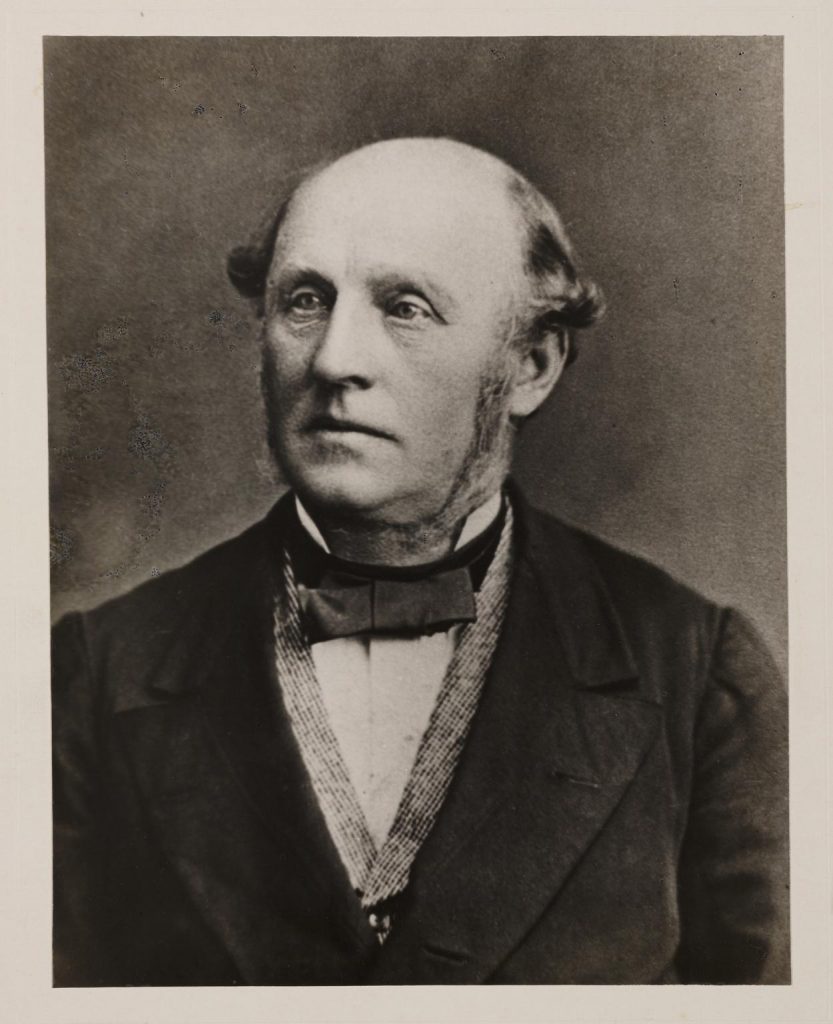
This work is licensed under a Creative Commons Attribution-NonCommercial-ShareAlike 4.0 International License.
Parkes developed a method for electroplating fine art objects for the company. And this was just one of at least 80 patents he would hold. He would also discover a method for extracting Silver from lead and a Cold Vulcanisation method for Rubber. The latter was used by Mackintosh for their famous coats.1
But today we’re more interested in the discovery that bore his name Parkesine. But Before we get to that we need to look at the development of photography.
It’s all about the Medium
The ability to store an image has been a cornerstone of photography. Ever since Thomas Wedgewood and others tried capturing images onto silver Nitrate coated paper in the 1790’s. It would be Niépce in the 1820’s who first perfected a fragile but durable image giving birth to photography. His storage medium of light sensitive material with bitumen coated paper led him to collaborate with Louis Daguerre. 2

The result of that, the Daguerreotype was sold to the world as the first photographic process in 1839. Neither this process or the Henry Fox Talbot‘s competing Calotype process allowed for multi-shot shooting. You needed to remove and replace the light sensitised paper in the darkroom and develop it.
Collodion – The next big step

The next advanced occurred with the use of photographic plates in 1851. These began using the wet Collodion process developed by Frederick Scott Archer, an English Photographer. The process allowed for much more rapid shots requiring just a few seconds (a fraction of the earlier techniques). The developing of the plates was less toxic and cheaper. But more importantly like Calotypes plates could be used once processed to make multiple prints. Within a decade Collodion plates had become the dominant medium. 3,4
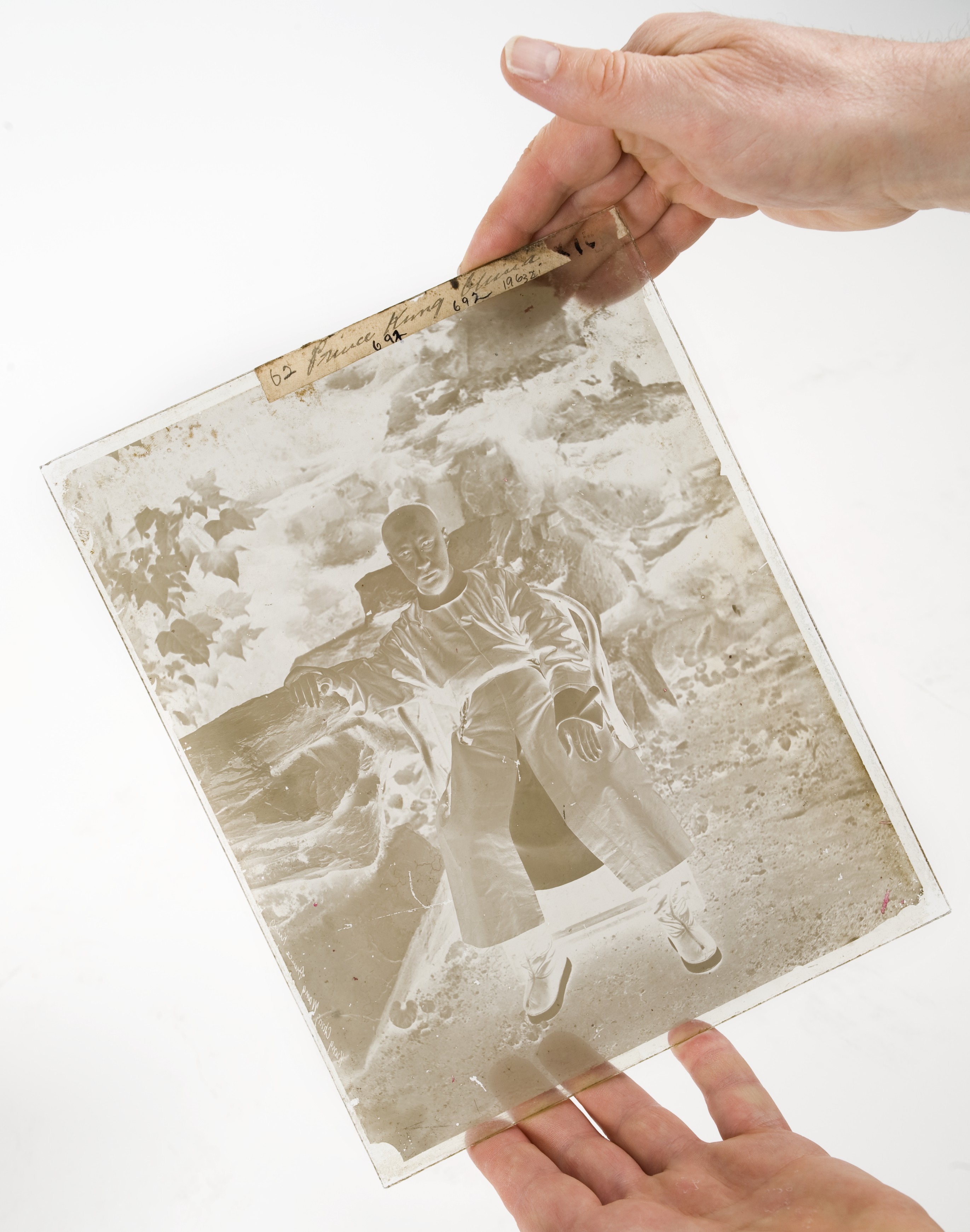
Wet Collodion was hard to use in the field. There was intense efforts made into the development of so called dry Collodion plates. This would allow for the creation of pre-prepared plates. These could also be swapped out and kept for a time before processing.
The development of photographic emulsions over the next 2 decades would allow dry plates to become a reality. We’ve looked at that before around the work of Dr Richard Maddox. Thanks to him and others mass produced prepared dry plates were available in the late 1870’s. This radically reduced costs and camera size. But it would be celluloid roll film that would really bring film to the masses.
And oddly Collodion was to have a direct role in that.
From Potatoes to Parkesine
The key ingredient of Collodion is Cellulose Nitrate (aka Nitrocellulose).
The development of this begins with Henri Braconnot, a brilliant French chemist in 1832. Braconnot is perhaps better known for other discoveries in organic chemistry like Pectin. Braconnot is actually heavily linked to phtography as the discover of Pyrogallic acid. This was widely used photographic developer in the 1800’s and early 1900’s. It is still in use today.5
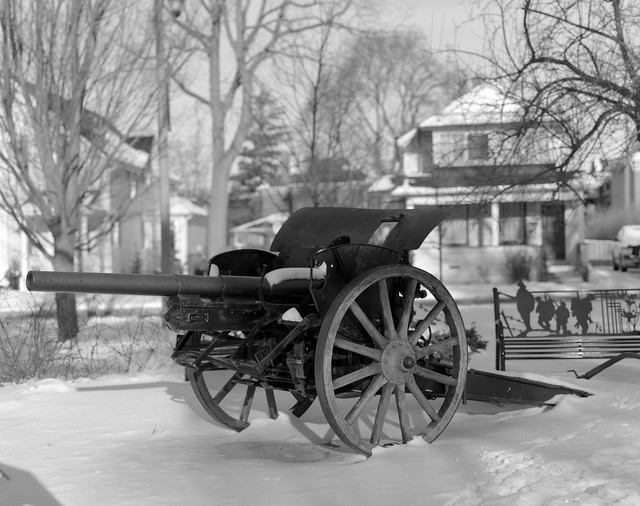
Braconnot was the first take a source of cellulose (wood fibres or potato starch) and combine it with Nitrate. He called this Xyloidine. Others would refine this, most notably Christian Friedrich Schönbein, a German-Swiss Chemist.
In 1845 Schönbein spilt a solution of nitric and sulfuric acid whilst experimenting at home. In a panic he mopped it up with his wife’s apron. He hung it up to dry in front of the fire , where it spontaneously combusted and burnt completely away. History does not tell us how much an earful he got from his wife. But his discovery was used in widely from munitions to Collodion. 6,7
We know from his long correspondence with Michael Faraday that Schönbein did more than burn his wife’s stuff. He wrote to Faraday several time in 1846 about his work. Interestingly he sent 2 items to Faraday made from this as he found it easy to mould. One was for exhibition at the Royal Institute and the other was bell he prepared for Faraday’s wife.8,9,10
He sagely warned –
‘So inflammable is that matter that on being brought in contact with the slightest spark it will instantly be set on fire leaving hardly any trace of ashes and if the combustion be caused within closed vessels a violent explosion takes place.’
Letter from Schönbein to Michael Faraday, March 1846.9
Sadly neither of these items are known to still exist. But like many Alexander Parkes was aware of Faraday’s correspondence with Schönbein. This likely provided a different kind of spark.
The Rise and quick fall of Parkesine
Parkes worked with Collodion initially. Parkesine can be made using that or by dissolving of nitrocellulose in a range of other solvents. It is then mixed it with vegetable oils. The resultant solid is easily mouldable and could be coloured. It hardened as the solvent evaporated off.
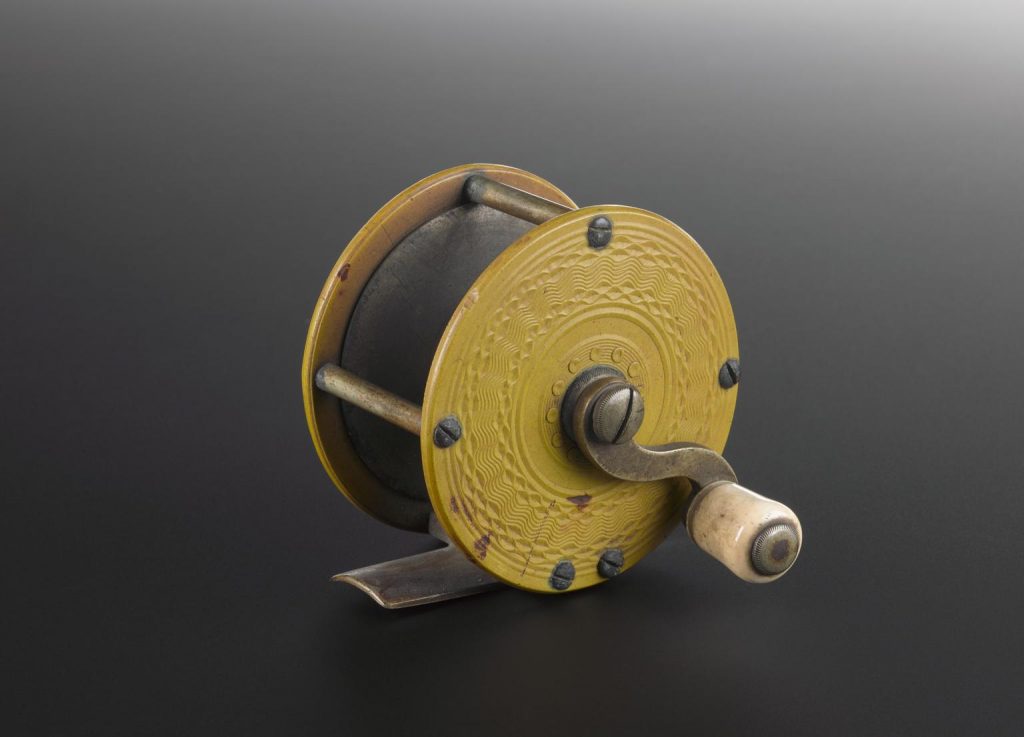
One of several that were used at times solvents was Camphor. Parkes didn’t attribute a huge amount to it initially. This has several roles to play later as we’ll see. Later Parkes mentions its use in his later patent application when he returned to looking at it 1881.11
Parkes had great success at the prototype level. He showed at the 1862 International exhibition (effectively a World’s Fair) and won a Bronze medal. Thankfully some example still exist today such our fishing reel.
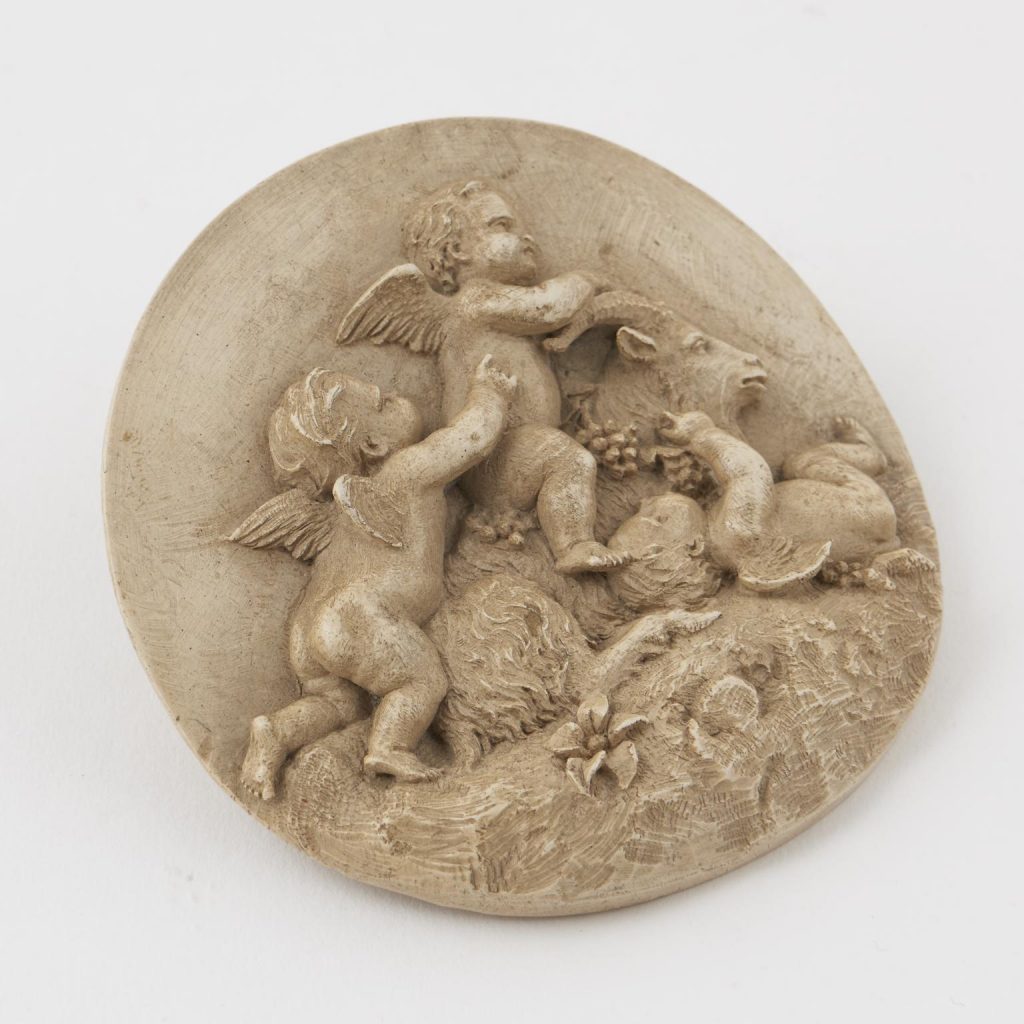
He decided to strike out and make it a commercial success. Parkes launched The Parkesine Company based in Hackney, London in 1866. But Parkesine was flammable and prone to shrinkage and warping. This was made worse by cost saving methods introduced to make the company profitable. Parkes was a brilliant innovator but not so great a businessman. The company closed in 1868. 5,12,13
Parkes had created the core principle of creating celluloid. But it would take some refinement & the American craze for Billiards to get to there.
The Trouble with Elephants

It might sound odd but Billiards drove the creation of celluloid.
In 19th Century America Billiards were big business. A range of games were played including pocket-less Carom Billiards. The most popular until 1870 was American 4-Ball Billiards ( a variant of English Billiards). This would evolve into 15 ball pool, the predecessor of modern Pool games which started to take over from Billiards. 14
The problem was the balls were made from Ivory. This was expensive to source and only 4 or 5 balls could be made from each tusk. Worryingly there wasn’t much concern over the fate of the Elephants. But there was genuine fear amongst business involved that demand would wipe out the supply. Michael Phelan, an Irish born superstar player in the US Billiards circuit and Billiards entrepreneur noted.
“and if any inventive genius would discover a substitute for ivory, possessing those qualities which make it valuable to the billiard player, he would make a handsome fortune for himself, and earn our sincerest gratitude.”
Michael Phelan, ‘The Game Of Billiards’ 15
So his company, Phelan & Collender offered a $10,000USD reward if anyone could come up with replacement for Ivory. 16
John Wesley Hyatt

The man who metaphorically called Hold my Beer was John Wesley Hyatt.
The son of Blacksmith, he was born in Starkey, upstate New York in 1837. He became a printer at just age 16 and was working in Albany when he heard about Phelan’s prize. 17
In some ways he and Parkes are very similar. Both trained in skilled professions rather than academia. Both were prolific inventors whose work covered a range of areas. Hyatt had well over 230 patents before his death in 1920. But Hyatt was a great refiner of processes. He was also more shrewd in business and knew when to get in expert help.
Great Balls of Fire
Hyatt started with a compound ball with a wood fibre core and shellac Ivory dust coating. It wasn’t successful but a start.
But he then had his Eureka moment.
Print workers used Collodion to protect their hands and coat minor injuries. Even today so called liquid bandages still use Nitrocellulose. Hyatt noted when a bottle of Collodion was spilt a hardening residue formed.
Just Like Parkes he started to experiment using Collodion but then switched to Cellulose nitrate. He began making balls with a thin layer of nitrocellulose
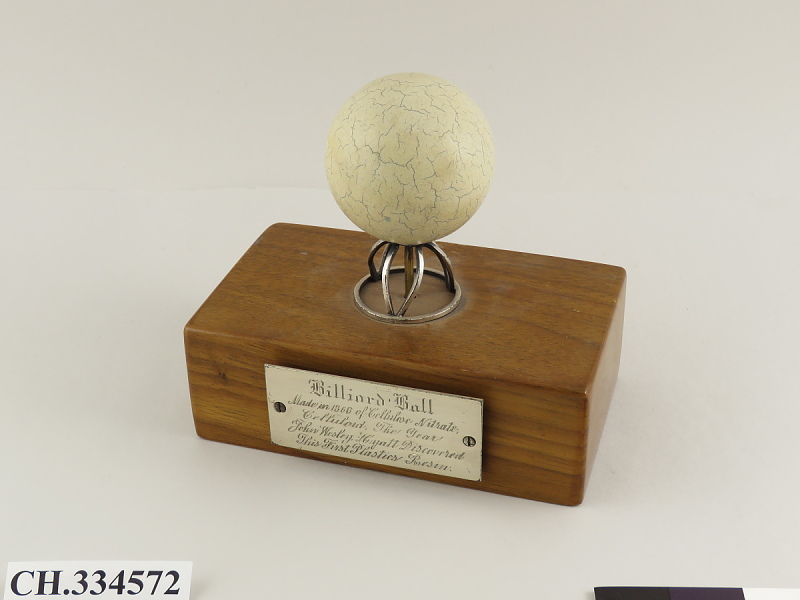
Unsurprisingly these balls were pretty flammable and easy to ignite. A point Hyatt acknowledged many years later when picking up the Perkin’s medal
“..consequently a lighted cigar applied would at once result in a serious flame, and occasionally the violent contact of the balls would produce a mild explosion like a percussion guncap. We had a letter from a billiard saloon proprietor in Colorado, mentioning this fact and saying he did not care so much about it, but that instantly every man in the room pulled his gun.”
James Wesley Hyatt, 1914 18
This led Hyatt to refine his process further. He had identified a common issue with his earlier product that had also affected Parkesine. It was prone to shrinkage as the solvent evaporated. So he began using Camphor as solvent. But importantly using only the minimum required. Also he used a mechanical method to make a more solid extract. This led to celluloid being a much more consistent and stable.
Hyatt patented his Celluloid in 1872. It is unclear if Parkes had any influence on Hyatt, but the Hyatt always insisted he had discovered things on his own.
Enter Daniel Spill
Meanwhile a rival product launched back in Britain.
Remember Parkes demonstrating Parkesine to the world in 1862 ?
It caught the eye of one Daniel Spill and his brother. Spill comes across as the Villain in this piece but that might be just our interpretation.
Spill was born in Winterbourne in 1832. He had originally started to study to be a Doctor. But he left to join his brother George’s company which made waterproof fabrics. Parkesine would have been of interest to the brothers and they likely saw it at the exhibition in 1862. They entered an agreement with Parkes to use it. Still began to create patents for its application.
The Xylonite Company
Parkes and Spill seemed to initially enjoy a good relationship with Parkes employing Daniel as the Parkesine Company’s work manager. When the company folded Spill bought up most of the liquidated stock. Spill set up his own company in 1868 called the Xylonite company. Xylonite was Spill’s his version of Parkesine. His company produced this and a similar plastic called Ivoride. Spill convinced Parkes to sign over his patents in 1869 and tweaked the process.
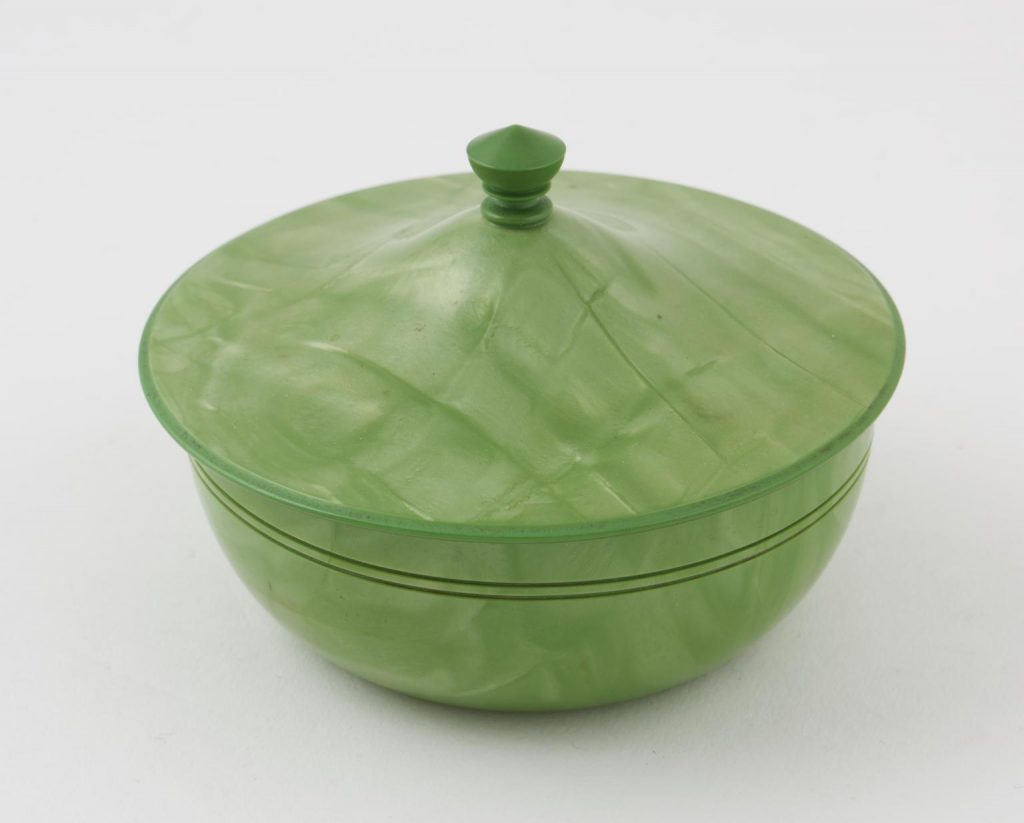
But just like the Parkesine Company, it wasn’t a success. In 1874 the company folded.
He would set up another Company in 1877 that would become British Xylonite. This was more successful and would long outlive Spill. Although likely has more to do with his more astute partners whilst Spill engaged in his legal battles. An off-shoot would still be trading into the 21st century. Notably Margaret Thatcher worked in the company before her career in Politics.
But Spill’s focus was already on the prize of who invented Celluloid
Celluloid V Xylonite
In 1875 Spill triggered a long running patent battle in the US courts. Much of this resolved around whom first used Camphor but later the mechanical process became key.
Now Parkes actually gave evidence. But this was not to provide a knock out blow on behalf of Spill. He was there on behalf of Hyatt.
By this point Parkes was not best friends with Spill. The split began when Spill had bought out his liquidated stock for cheap. Spill’s frequent claims, that he had invented the compounds further vexed Parkes.
The US legal process went on for years. Initially Spill won in 1880 but later in 1884 courts accepted the view that Parkes he had created the core formula. So technically neither Spill or Hyatt had a claim on it. Mossman describes Spill as a broken man but equally Spill’s health was failing with Diabetes. He returned to England dying in 1887 at the age of just 55.8
From Billiards to Film
Hyatt never won the Billiard prize.
His Balls were well received by some but not by others . Many felt they lacked the natural bounce of ivory. And then there was the flammability. They did sell but were very much seen as inferior to Ivory balls.
But given the massive success he had with Celluloid, I doubt he really minded losing the prize. He was able to make a consistent product. One that is mouldable to make dentures, Stiff collars or cheap copies of more expensive items like ivory combs. The Plastic boom had arrived. Quite literally given celluloid’s volatile nature !
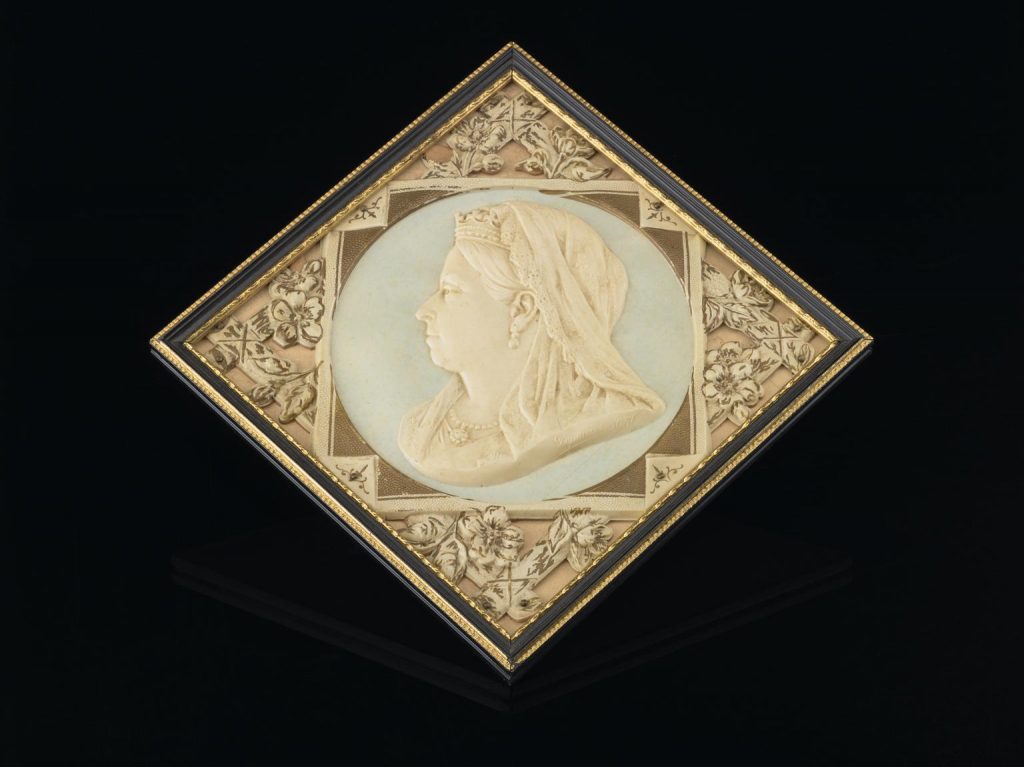
In 1907 Leo Baekeland would invent the first synthetic plastic Bakelite. This would rapidly replace both Celluloid and ivory as the main source of balls but also put plastic use into another league. 13
Parkes and Spill both foresaw the use of Plastic in replacing glass in photographic plates. But it was Hyatt’s Celluloid that would achieve this. How celluloid gets used as first as film plates in the 1880’s and later roll film is another tale. But that’s for another day and it would not have occurred without Parkes and Hyatt.
The Celluloid Film Revolution
Celluloid revolutionised film into the product we know now. Celluloid allowed for cheap film production and smaller cameras that could take multiple shots. Companies like Kodak moved their focus from the rich and professional to the masses with cameras like the 1900 Kodak Brownie.

Importantly it also allowed the birth of the moving picture industry. As we’ve seen earlier in this series,Thomas Edison first publicly showed his Kinetoscope, the first commercial moving picture viewer, in 1891. Within a decade there was an established movie industry.
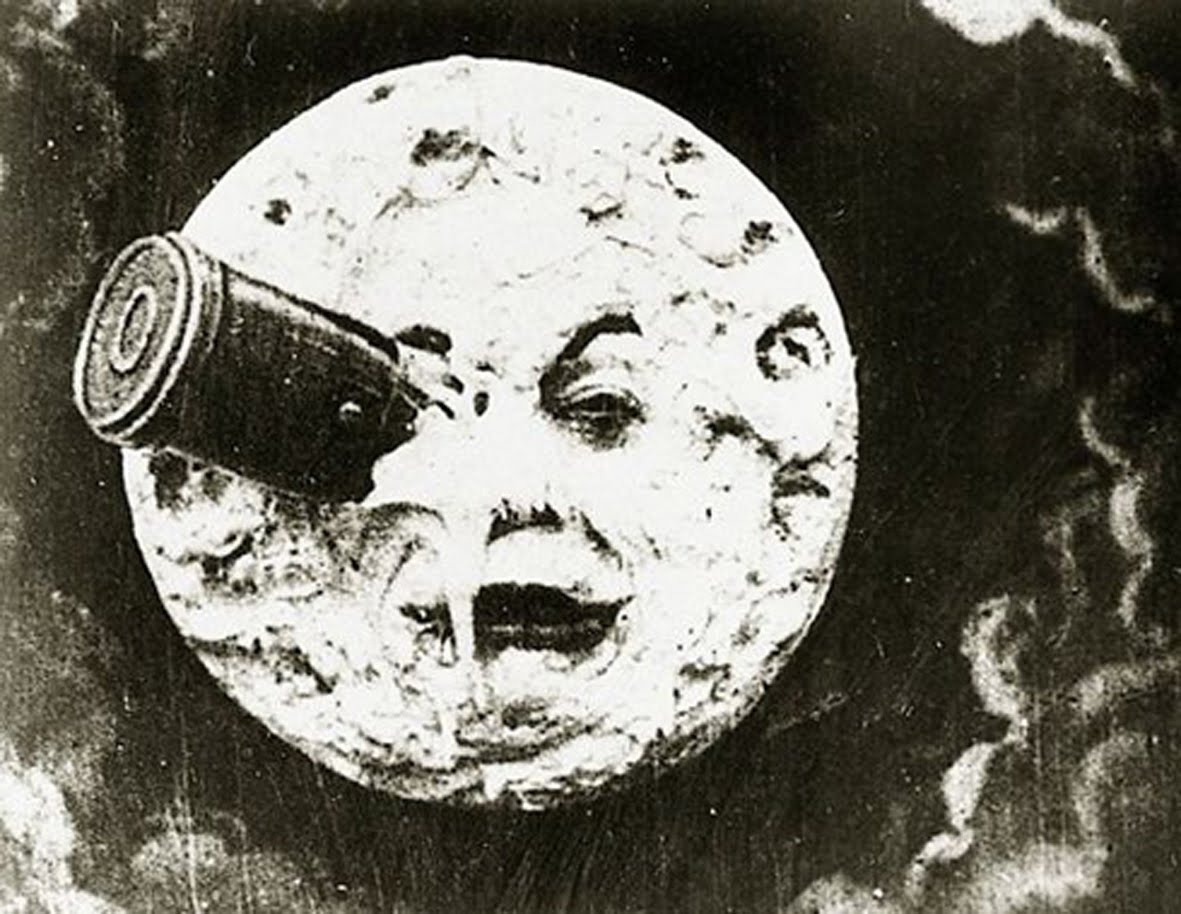
But what of Parkesine & Parkes
Parkes sadly ended up being almost invisible in the development of Celluloid for many years. Although mentioned in the Presentation address when Hyatt got the Parkin Medal in 1914. Parkes only got mention in terms of the legal dispute.14
His reputation has had a bit of a renaissance in recent years both in academic circles but in the public eye especially in Birmingham and London where he lived and worked.

He left Birmingham and moved to London in 1881. As mentioned he started working on Nitrocellulose again. With his brother he launched the London Celluloid Company Ltd. But this too failed. He died in West Dulwich in 1890.1
In fairness Hyatt had correctly adapted the process to make a better final product. However the core concept had been Parkes. Sadly he realised he was being lost in the story. So it seems fitting to leave the last words to him.
‘Who Invented Celluloid’ I have put together a brief
Alexander Parkes to Mr G Lindsay, a journalist 1881 13
history of my various patents for the invention of Parkesine,
Xylonite, or Celluloid for they are all the same. I do wish the
World to know who the inventor really was, for it is a poor
reward after all I have done to be denied the merit of the
invention’
Acknowledgements
My great thanks to Dr Susan Mossman of the Science Museum for her kind help and knowledge in preparation of this post. Thanks to my fiend and fellow blogger Alex Luyckx for the kind use of his photo developed in Pyrocat-HD. thanks to other image sources whom are credited above.
Our main image of the reel is by the Science Museum Group and is licensed under a Creative Commons Attribution 4.0 International License.
Footnotes
*Parkesine is acknowledge as the first man made Plastic (so excluding things like rubber or using treated animal horns). However Eduard Simon’s did accidentally discover Polystyrene in 1839. But he simply distilled an oily substance from the resin of the Sweetgum tree which he called Styrol. This thickened by itself into what we know believe was Polystyrene but without aid from Simon.
References
Additional sources include articles on named people in wikipedia
- Young, G. (2019) . Birmingham Post Website, https://www.birminghammail.co.uk/whats-on/arts-culture-news/brummie-19-children-who-invented-16294131
- ‘History of photography’, Wikipedia https://en.wikipedia.org/wiki/History_of_photography
- Harding C. (2012) ‘A is for… Frederick Scott Archer’ Science + Media Museum Blog https://blog.scienceandmediamuseum.org.uk/photography-a-z-frederick-scott-archer-wet-collodion-process/
- Frederick Scott Archer website http://www.frederickscottarcher.com/
- Hutchinson, G. (Unknown). ‘Working With Pyrogallol Developers’. Freestyle Website https://www.freestylephoto.biz/working-with-pyrogallol-developers
- Mossman, S. (1997). Perspectives on History and Technology of Plastics. In Mossman, S (Ed), Early Plastics : Perspectives 1850-1950, pg15-71, Leicester University Press
- Rossell, D (2000) ‘Exploding Teeth, Unbreakable Sheets and Continuous Casting: Nitrocellulose from Gun-cotton to Early Cinema’ . Originally a lecture given at the Congress of the Fédération International des Archivs du Film, June 2-7, 2000, British Film Institute, London. https://research.gold.ac.uk/id/eprint/1162/1/Exploding%20Teeth%20-%20FIAF%20celluloid%20text.pdf
- Mossman, S. (2002). ‘Early Plastics Influences and Connections’. In Braun, H.J. & Hearlea, A. (Eds), Proceedings of the XXth International Congress of History of Science (Liège, 20-26 July 1997), Vol XV, 127-138
- Christian Friedrich Schoenbein to Michael Faraday. 18 March 1846. In the Michael Faraday Collection https://epsilon.ac.uk/view/faraday/letters/Faraday1844
- Christian Friedrich Schoenbein to Michael Faraday. 24 March 1846. In the Michael Faraday Collection https://epsilon.ac.uk/view/faraday/letters/Faraday1849
- Patent Office (UK) (1876) ‘Patents for inventions. Abridgments of specifications 1627-1866’ (abbr), Vol 80 pg 255. https://books.google.co.uk/books?id=0nCoU-2tAx8C&pg=PA255&redir_esc=y#v=onepage&q&f=false
- Bartholmew, E.,(2018) Parkesine: How Alexander Parkes paved the way for plastic’s global mass production from a tiny Hackney Wick factory, Hackney Gazette (online) 07/06/18, https://www.hackneygazette.co.uk/news/parkesine-how-alexander-parkes-paved-the-way-for-plastic-s-3595242
- Mossman, S. (2017) ‘Early plastics : perspectives 1850-1950’ 2017, Ferrum, 89,14-24 https://www.e-periodica.ch/cntmng?pid=fer-002:2017:89::158
- Shamos , M (1995). ‘A Brief History of the Noble Game of Billiards’, Billiard Congress Of America Website https://bca-pool.com/page/37
- Phelan, M., (1878). ‘The Game Of Billiards’ (11th Ed), p34, H.W. Collender, New York. https://books.google.co.uk/books?id=nSACAAAAYAAJ&printsec=frontcover#v=onepage&q&f=false
- Robbett M.K., (2018), ‘Imitation Ivory and the Power of Play’ , Lemelson Centre Website https://invention.si.edu/imitation-ivory-and-power-play
- Chandler, C.F, (1914). ‘Presentation address’. Ind. Eng. Chem., 6(2), 156–158 https://babel.hathitrust.org/cgi/pt?id=njp.32101056204686&view=1up&seq=164
- Hyatt, J.W., (1914). ‘Address Of Acceptance’. Ind. Eng. Chem., 6(2), 158–161 https://babel.hathitrust.org/cgi/pt?id=njp.32101056204686&view=1up&seq=166

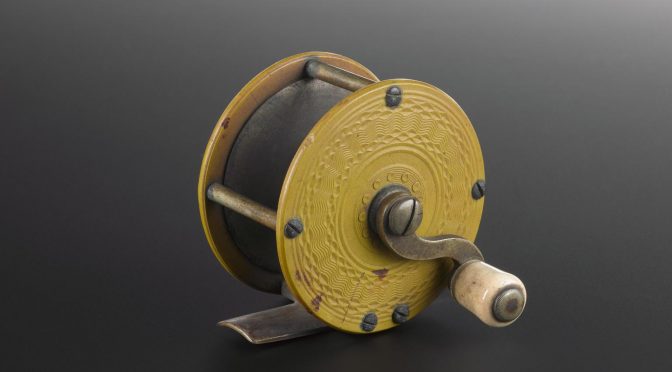

This was a fascinating read. Thanks for all the hard work you put into this article.